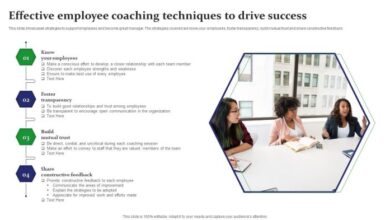
7 tips for starting a career in PR: Launching a successful PR career isn’t just about knowing the theory; it’s about mastering the practical skills and understanding the ever-evolving industry landscape. This guide breaks down the key steps to navigate this exciting field, from defining PR to securing your first role.
This comprehensive guide explores the essential elements of a successful PR career. We’ll delve into defining PR, building a strong foundation, mastering communication skills, developing media relations, utilizing digital platforms, understanding the industry landscape, and ultimately, seeking opportunities and building your career. Each section provides actionable advice, helping you transform your aspirations into a thriving PR career.
Defining Public Relations
Public relations (PR) is a strategic communication process that builds and maintains mutually beneficial relationships between an organization and its various publics. It’s about understanding and managing how different groups perceive the organization, shaping a positive image, and fostering trust. Effective PR goes beyond just promoting products or services; it encompasses the entire organizational narrative.A PR professional plays a crucial role in shaping public opinion, managing crises, and building a strong reputation for their organization.
Their responsibilities encompass a wide range of activities, from media outreach and social media management to event planning and community engagement. The success of any PR campaign hinges on the ability of professionals to understand and address the needs and concerns of the target audience.
Key Roles and Responsibilities of a PR Professional
PR professionals are the bridge between an organization and the public. Their responsibilities often include: developing and implementing communication strategies, managing media relations, creating and distributing press releases, organizing events, handling crisis communication, and monitoring public perception. Building strong relationships with journalists, influencers, and community leaders is essential for effective PR. Proactive engagement with the public, through social media and other channels, is also a vital aspect of modern PR.
Types of PR Specializations
Public relations encompasses a variety of specializations, each focusing on specific aspects of communication and relationship management. Examples include:
- Media Relations: This specialization focuses on building and maintaining relationships with journalists and media outlets. It involves pitching stories, responding to media inquiries, and securing positive media coverage. Success in this area requires a deep understanding of journalistic principles and a knack for crafting compelling narratives.
- Crisis Communication: This specialization is crucial for handling negative situations or emergencies. PR professionals in this area develop strategies to mitigate damage, maintain credibility, and restore trust during difficult times. Swift and transparent communication is key in managing crises effectively.
- Community Relations: This specialization centers on building and maintaining positive relationships with local communities. It involves identifying community needs, engaging in community events, and fostering goodwill. Understanding the local context and addressing community concerns are essential for success.
- Social Media Management: In today’s digital age, social media is a critical tool for PR. This specialization involves creating engaging content, monitoring social media conversations, responding to comments, and managing online reputation. Adaptability to evolving social media trends and algorithms is vital for success in this area.
Importance of Building Relationships in PR
Building strong relationships is fundamental to successful PR. It’s not about transactional communication; it’s about establishing trust and mutual understanding. Relationships with journalists, influencers, stakeholders, and the public are essential for creating a positive image and fostering long-term goodwill. Cultivating these relationships involves consistent engagement, open communication, and a genuine commitment to building trust.
Comparing PR with Other Related Fields
| Feature | Public Relations | Marketing | Journalism ||—|—|—|—|| Primary Goal | Building relationships and managing reputation | Increasing sales and brand awareness | Providing unbiased information to the public || Target Audience | Diverse publics (stakeholders, media, community) | Consumers, clients | General public, specific audiences || Communication Style | Two-way communication, often persuasive | Persuasive, often promotional | Objective, factual reporting || Focus | Image, reputation, relationships | Sales, profits, brand positioning | News, events, issues || Ethical Considerations | Transparency, honesty, building trust | Honesty, ethics in advertising | Objectivity, accuracy, fairness |
Building a Strong Foundation
Laying a solid foundation is crucial for a successful PR career. It’s not just about acquiring knowledge; it’s about developing a comprehensive skillset, building a professional network, and crafting a personal brand that resonates with potential employers. A strong foundation will equip you to navigate the dynamic world of public relations effectively.A robust foundation is built on a blend of education, skills, and professional connections.
This involves more than just theoretical knowledge; practical experience and demonstrable skills are essential. This includes mastering the art of communication, writing, and research, while simultaneously fostering valuable relationships within the industry.
Educational Background
A formal education plays a vital role in setting a strong foundation for a PR career. While no single degree is mandated, a bachelor’s degree in communications, journalism, public relations, or a related field provides a strong academic base. Specialized master’s degrees, like a Master of Public Relations, can further enhance expertise. Certifications, such as the Accredited in Public Relations (APR) credential, demonstrate a commitment to professional development and add value to a resume.
Essential Skills
A successful PR professional needs a diverse skillset. Excellent communication skills are paramount. This includes not only the ability to articulate ideas clearly but also the ability to understand and respond to different audiences. Proficiency in written and oral communication is critical for crafting compelling messages and engaging in effective presentations. Strong research abilities are also vital, allowing for in-depth analysis of issues, trends, and audiences.
The ability to analyze data and identify key insights is highly valuable in formulating strategic PR plans.
Networking and Relationship Building
Networking is an integral part of a PR career. Building relationships with journalists, influencers, and industry professionals is key to accessing opportunities and expanding your network. Attend industry events, join professional organizations, and actively engage in online communities to cultivate connections. Demonstrating genuine interest and a willingness to help others is crucial for building rapport. Remember, relationships are built over time through consistent interaction and mutual benefit.
Developing a Professional Online Presence
A strong online presence is essential in today’s digital age. Creating a professional website or online portfolio showcasing your skills, experience, and projects is crucial. Actively participating in relevant online forums and social media platforms allows you to engage with the industry and build your brand. A polished LinkedIn profile is a must, highlighting your expertise and connections.
This professional online presence should be meticulously maintained and updated to reflect your career growth and evolution.
Crafting a Personal Brand Statement
A personal brand statement in PR is a concise articulation of your unique value proposition. It should define your key skills, interests, and career aspirations, showcasing what sets you apart from others. Highlight your areas of expertise and your passion for public relations. It should reflect your personality, values, and the impact you want to have in the field.
This statement should be clear, concise, and easily communicable, making it clear what you offer to clients and employers.
Mastering Communication Skills

Public relations thrives on effective communication. From crafting compelling narratives to building relationships with stakeholders, the ability to connect with diverse audiences is paramount. This crucial skillset is not just about speaking; it’s about listening, writing, and adapting your message to various channels. Strong communication forms the bedrock of a successful PR career.Mastering communication in PR involves understanding the nuances of written and verbal communication, the importance of active listening, and the ability to adapt to various channels.
Each method serves a specific purpose in building relationships and achieving desired outcomes. Knowing how to craft a press release, for example, differs from tailoring a social media post, and each requires distinct strategies for maximum impact.
Thinking about launching a PR career? Seven solid tips can set you up for success. Networking is key, and building genuine relationships with journalists and influencers is crucial. Meanwhile, staying updated on industry trends is vital, especially when tech giants like Samsung are about to release a new device, such as the upcoming Galaxy Note II’s US debut.
This upcoming launch provides a fascinating case study for PR professionals to learn from. Ultimately, understanding the target audience and crafting compelling narratives are essential for a successful PR journey.
Importance of Effective Written and Verbal Communication, 7 tips for starting a career in pr
Clear and concise written communication is vital for disseminating information effectively. PR professionals frequently write press releases, social media posts, website content, and more. Strong verbal communication skills are equally critical. Presentations, media interviews, and internal team meetings demand well-articulated and persuasive communication. A skilled communicator can effectively convey complex ideas and build trust with stakeholders.
Role of Active Listening in PR
Active listening is more than just hearing; it’s about understanding the message from the speaker’s perspective. In PR, active listening is essential for understanding stakeholder needs and concerns. By listening attentively, PR professionals can tailor their communication strategies to better address their audiences’ needs. It allows for the identification of potential crises and the development of preemptive strategies.
Examples of Different PR Writing Styles
Different PR writing styles cater to different audiences and purposes. A formal press release will employ a different tone and structure than a casual social media update. For instance, a press release about a company’s new product launch would use a formal and factual style, whereas a social media post might adopt a more engaging and conversational approach to reach a wider audience.
Consider the audience, the message, and the desired outcome when choosing a writing style.
Crafting Compelling Press Releases
Crafting a compelling press release is a key skill in PR. A well-written press release can generate significant media coverage and increase brand awareness. It needs to be concise, factual, and newsworthy. A press release should include a captivating headline, a clear and concise summary of the news, quotes from relevant individuals, and contact information. A strong lead, providing context and significance, is vital.
“A well-crafted press release should be informative, engaging, and easily digestible for the media.”
Methods for Crafting Compelling Press Releases
Here are key aspects for writing compelling press releases:
- Clear and Concise Language: Avoid jargon and overly complex sentence structures. Focus on delivering the information in a way that’s easy to understand for the target audience.
- Compelling Headline: A captivating headline immediately grabs the reader’s attention and entices them to read further. It should clearly state the key information.
- Strong Lead Paragraph: The first paragraph should immediately convey the most crucial information. This will help grab the reader’s attention.
- Newsworthy Content: Ensure the content is relevant and timely, and aligns with the media’s interests. Focus on the ‘what’, ‘why’, and ‘how’ aspects of the news.
- Quotes and Testimonials: Including quotes from key individuals adds credibility and personality to the press release. These quotes provide additional insight and context.
Comparison of Communication Channels
Different communication channels serve various purposes in PR. Choosing the right channel is crucial for maximizing impact.
| Communication Channel | Purpose | Strengths | Weaknesses |
|---|---|---|---|
| Social Media | Building relationships, increasing brand awareness, driving engagement | Direct interaction with the public, cost-effective, immediate feedback | Requires constant monitoring, potential for negative feedback, limited control over message |
| Distributing information, announcements, and updates | Targeted messaging, trackable metrics, professional communication | Can be perceived as impersonal, less immediate feedback, potentially high volume | |
| Press Kits | Providing comprehensive information about a company, product, or event to journalists | Concise, detailed information, valuable resources for journalists | Can be overwhelming for journalists, requires significant preparation |
Developing Media Relations: 7 Tips For Starting A Career In Pr
Building strong relationships with journalists and media outlets is crucial for any PR professional. A robust media network can amplify your client’s message, generate positive publicity, and ultimately, drive success. This section delves into the process of forging these connections, mastering the art of media pitching, and understanding the ever-evolving landscape of media trends.Effective media relations isn’t just about sending press releases; it’s about understanding the media landscape, building rapport with journalists, and positioning your client’s story in a compelling way.
This requires a proactive and strategic approach, combining a deep understanding of the media’s needs with a keen ability to communicate effectively.
Building Relationships with Journalists and Media Outlets
Establishing strong relationships with journalists and media outlets requires consistent effort and genuine engagement. This involves understanding their beats, their preferred communication styles, and the types of stories they cover. Regularly reading their work and following them on social media can offer valuable insights. Participating in industry events and conferences is another effective way to connect with journalists in a professional setting.
Importance of Media Pitching
Media pitching is the art of effectively communicating a story idea to journalists. A compelling pitch encapsulates the news hook, target audience, and why this story is relevant to their readers. It’s about understanding their specific needs and offering them something valuable. A well-crafted pitch increases the likelihood of securing media coverage. The pitch should be concise, highlighting the most important information about your client and the story.
Key Elements of a Successful Media Kit
A media kit is a valuable resource for journalists. It provides essential information about your client, their products or services, and the news you’re pitching. A comprehensive media kit should include high-quality images, bios of key individuals, recent press releases, and relevant statistics. A visually appealing and easily navigable design enhances its effectiveness. Think of it as a one-stop shop for everything journalists need to know about your client or story.
Understanding Media Trends
Staying abreast of current media trends is paramount in PR. Understanding evolving news cycles, changing social media algorithms, and the rising prominence of online publications is crucial. It’s about recognizing the shift from traditional media to digital platforms and adjusting your strategies accordingly. Analyze which media outlets resonate most with your target audience. This understanding enables you to tailor your messaging and reach the right audience through the right channels.
Creating a Media Outreach Strategy: A Step-by-Step Guide
A well-defined media outreach strategy is a roadmap for securing media coverage. It Artikels the target audience, specific media outlets, key messages, and timelines. A successful strategy will include the following steps:
- Identify Target Media Outlets: Research and compile a list of relevant publications, blogs, and websites. Consider their audience, editorial focus, and typical coverage.
- Craft Compelling Media Pitches: Develop tailored pitches for each outlet, highlighting the story’s unique angle and its relevance to their readers. Personalize each pitch to demonstrate you’ve done your research.
- Build Relationships with Journalists: Engage with journalists proactively by attending industry events, following their work, and connecting with them on social media. Building rapport takes time and consistency.
- Follow Up Appropriately: After sending a pitch, follow up with a brief email or phone call to check for any questions or concerns. Be mindful of their time constraints.
- Monitor Media Coverage: Track media mentions and assess the effectiveness of your outreach strategy. Regularly review coverage to gauge the impact and refine future approaches.
Utilizing Digital Platforms
The digital landscape has fundamentally reshaped public relations. No longer confined to traditional media outlets, PR professionals now leverage a multitude of online tools to connect with target audiences, build brand awareness, and manage reputation. This shift necessitates a deep understanding of digital platforms and their potential for amplification and engagement.Effective PR strategies in the modern era rely heavily on digital platforms.
By understanding how social media, , and content marketing work, PR professionals can maximize their reach and impact. This chapter will delve into these crucial aspects, providing practical insights and examples.
The Significance of Social Media in PR
Social media has revolutionized communication, providing PR professionals with unprecedented opportunities for direct engagement with audiences. It’s no longer sufficient to simply broadcast information; PR professionals must actively participate in conversations, fostering relationships and building trust. By engaging with followers, responding to comments, and sharing relevant content, brands can build a loyal community and strengthen their brand image.
This direct interaction allows for real-time feedback and adjustments to strategies.
So, you’re looking to launch a PR career? Seven solid tips can help you get started, but navigating the industry’s nuances takes more than just knowing the ropes. You might also want to check out youstand offers safe haven for discussing tinderbox topics – a platform dedicated to fostering open dialogue on sensitive issues. Ultimately, these discussions, like the practical PR tips, can help you build a strong foundation for success in the field.
The Role of in PR Strategies
Search Engine Optimization () is critical for driving traffic to a brand’s website and increasing visibility. By incorporating relevant s and optimizing website content, PR professionals can enhance a brand’s online presence and make it easier for potential customers to find them. A strong strategy ensures that a brand’s messages and information are discoverable through search engines, maximizing the reach of PR efforts.
This increases the likelihood of attracting the right target audience.
How to Utilize Content Marketing in PR
Content marketing plays a vital role in establishing thought leadership and attracting potential customers. PR professionals can create valuable content—blog posts, articles, videos, infographics, and more—that addresses the needs and interests of their target audience. This approach positions the brand as a reliable source of information and expertise. This valuable content, when properly distributed, can attract organic traffic and build trust.
Content marketing allows for deeper engagement, fostering relationships and establishing credibility.
Examples of PR Campaigns Utilizing Social Media
Numerous successful PR campaigns have utilized social media to achieve significant results. One example is a campaign by a clothing brand that used Instagram to showcase customer-generated content, fostering a sense of community and engagement. Another campaign leveraged Twitter to engage in real-time conversations with potential customers, responding to queries and addressing concerns immediately. These campaigns demonstrate the power of social media in fostering brand loyalty and building a positive image.
Seven tips for a PR career kickstart are crucial, but understanding how HR automation, like those examples detailed in hr automation examples benefits , can streamline processes is equally important. Ultimately, a strong understanding of these automation tools can give you a competitive edge in the field, demonstrating your adaptability and interest in modern work practices. Focusing on building relationships and crafting compelling narratives, while also remaining knowledgeable about tech advancements, are key to thriving in PR.
Effectiveness of Digital Tools for PR Professionals
| Digital Tool | Effectiveness Metrics | Examples |
|---|---|---|
| Social Media (Facebook, Instagram, Twitter) | Increased brand awareness, improved customer engagement, enhanced brand reputation | Targeted advertising campaigns, influencer collaborations, contests and giveaways |
| Improved website traffic, increased organic search visibility, enhanced lead generation | research, on-page optimization, link building | |
| Content Marketing (blog posts, articles, videos) | Increased brand visibility, improved website traffic, enhanced thought leadership, higher lead generation | Creation of informative articles, webinars, videos that address audience needs |
| Email Marketing | Improved customer retention, enhanced brand communication, targeted outreach | Newsletters, promotional offers, event invitations |
| Paid Advertising (Google Ads, Social Media Ads) | Targeted reach, quick results, measurable ROI | Retargeting campaigns, lead generation ads, brand awareness campaigns |
Understanding the Industry Landscape
The PR industry is in constant flux, driven by technological advancements, global interconnectedness, and evolving societal expectations. Navigating this dynamic environment is crucial for aspiring PR professionals. Understanding the current trends and the impact of various forces is essential to developing a successful and impactful career.
Current Trends in PR
The PR landscape is experiencing significant shifts. Emphasis is increasingly placed on authenticity, transparency, and building meaningful relationships with stakeholders. Data-driven insights are becoming critical for measuring campaign effectiveness and demonstrating ROI. Social media engagement is no longer optional but rather an integral part of PR strategies. Crisis communication and reputation management remain key areas of focus, demanding proactive and agile responses.
Furthermore, the rise of influencer marketing and the increasing importance of content creation are shaping the future of PR.
Role of Technology in PR
Technology plays a pivotal role in modern PR. Automation tools streamline tasks, from social media scheduling to media monitoring. Data analytics tools provide valuable insights into campaign performance, enabling more targeted and effective strategies. Virtual and augmented reality offer new avenues for engaging with audiences and storytelling. The use of AI and machine learning is also rapidly evolving, impacting content creation and audience targeting.
Impact of Globalization on PR Practices
Globalization necessitates adapting PR strategies to diverse cultural contexts. Understanding and respecting cultural nuances is essential for building trust and credibility across borders. International collaborations and cross-cultural communication become crucial for reaching global audiences. Localized messaging is vital for effective communication and achieving desired results in specific markets. Building strong relationships with international media outlets and understanding global communication standards is critical for success in the globalized market.
Importance of Ethical Considerations in PR
Maintaining ethical standards is paramount in PR. Transparency and honesty are essential for building trust with stakeholders. Protecting client confidentiality and avoiding conflicts of interest are fundamental principles. Promoting responsible and accurate information is critical for upholding professional integrity. Understanding and adhering to relevant regulations and laws are essential for operating within ethical boundaries.
Examples of Successful PR Campaigns
Several successful campaigns exemplify current PR trends. For example, Patagonia’s commitment to environmental sustainability resonates with environmentally conscious consumers, demonstrating authenticity and transparency. Similarly, Dove’s campaigns promoting body positivity and inclusivity have resonated with diverse audiences, highlighting the power of social impact. These campaigns showcase the importance of building relationships, aligning with values, and engaging in authentic dialogue with stakeholders.
Seeking Opportunities and Building Your Career
Landing a PR job requires more than just a stellar resume. It demands proactive networking, meticulous preparation, and a commitment to continuous learning. This stage involves identifying suitable opportunities, showcasing your skills, and demonstrating your passion for the field. You need to be a proactive and persistent job seeker.Success in PR is not just about finding a job; it’s about building a career.
This involves understanding the industry landscape, recognizing emerging trends, and adapting your skills to meet the evolving needs of the field. By demonstrating adaptability and a thirst for knowledge, you can position yourself for long-term success.
Applying for PR Jobs
A successful job application involves a multifaceted approach. Thorough research into target companies is essential. Understanding their mission, values, and recent news helps tailor your application materials, highlighting how your skills and experience align with their needs. Demonstrate an understanding of their work and show that you’ve done your homework. Actively seek out companies that resonate with your values.
Preparing for Interviews
Preparing for PR interviews goes beyond simply memorizing your resume. Practice answering common interview questions, emphasizing your communication skills, problem-solving abilities, and teamwork experience. Highlight your successes in previous roles, explaining how your actions led to positive outcomes. Research the interviewers and the company culture. This demonstrates genuine interest and a proactive approach.
Demonstrate your understanding of the PR industry, current events, and industry trends. Anticipate questions about your strengths and weaknesses and craft thoughtful responses.
Continuous Learning and Professional Development
Staying updated on the latest industry trends and technologies is crucial for success in PR. The PR field is constantly evolving. Attend industry conferences, webinars, and workshops to stay abreast of emerging tools and techniques. Seek out mentors and experienced professionals who can guide your career path. Engage in ongoing professional development.
Reading industry publications and following thought leaders in the field will help you stay informed and ahead of the curve. This includes understanding the importance of public relations and its role in modern business.
Career Paths in PR
The PR field offers a variety of career paths. From entry-level roles to senior management positions, the options are diverse and exciting. Specializations include corporate communications, media relations, public affairs, crisis communication, and social media management. Each path requires specific skills and experience. Early career roles often involve assisting senior staff and developing a strong understanding of the industry.
Progression typically involves taking on increasing responsibilities and demonstrating proficiency in various areas. Consider your interests and strengths when choosing a specialization.
Entry-Level PR Roles and Responsibilities
| Entry-Level PR Role | Typical Responsibilities |
|---|---|
| Junior Public Relations Specialist | Assisting with media relations, social media management, event planning, content creation, and basic research. |
| Public Relations Intern | Supporting senior PR professionals with tasks like research, media monitoring, content creation, and social media engagement. Often focused on learning and gaining experience. |
| Communications Assistant | Managing correspondence, scheduling appointments, preparing presentations, and assisting with project management. |
Concluding Remarks

So, are you ready to embark on your PR journey? By understanding the fundamentals and embracing the practical tips Artikeld in this guide, you can position yourself for success in this dynamic field. Remember, building relationships, mastering communication, and adapting to industry trends are crucial for thriving in the ever-evolving world of PR. This is just the beginning of your PR adventure!





